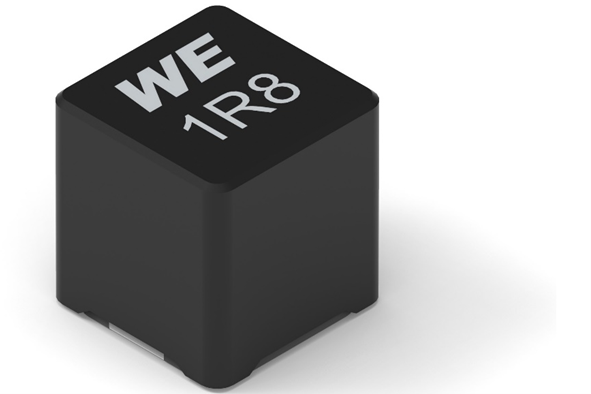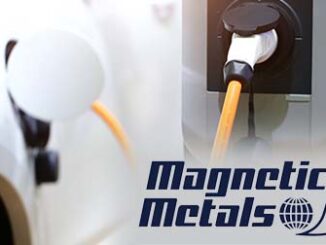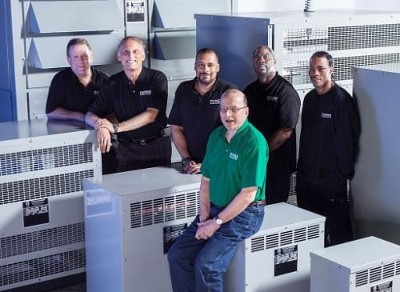By Samir Kagalwala – Power Magnetics Consultancy
The case in point is an Inductor made with 30.5/13/9 ferrite cores. The manufacturing personnel were frustrated that it passed all specified tests but for the Q, but more batches were rejected than passed because of low Q. They vehemently wanted to remove it from the specs because, I believed, they wanted a good night sleep!
The manufacturing personnel requests for removal of the Q from the spec were not well taken by the inductor designers. While both the groups well knew that Q stood for quality, with the divide between them, the Q stood for ‘quarrel’ rather than ‘quality’.
Fundamentally, the function of an efficient (i.e. quality) inductor is to store the received energy and deliver it back when asked, ideally without losing any energy. However, in reality it loses energy in the transformation process. The resistance of the copper wire causes energy loss (in terms of heat generated by wire resistance) which in turn causes a proportionate loss of inductive quality. The power input minus the power loss is the power available at output to induce an inductance. The ratio of power input and power output is the efficiency of the inductor. The synonym of the term efficiency is quality, the Q!
Manufacturing guys nodded a ‘kind of no’ when I asked them if the Q defined as above was frustrating. But, I believed their nod meant ‘not yet’.
Given the definition, meeting specified Q signifies that the coil would deliver certain amount of power in relation to input power.
 The formula of Q boils down to the ratio of its inductive reactance to its resistance at a given frequency i.e.
The formula of Q boils down to the ratio of its inductive reactance to its resistance at a given frequency i.e.
where R is its internal electrical resistance and wL is inductive reactance at resonance.
Given the formula, mathematically an inductor with higher inductive reactance and/or lower resistance would result into an inductor that has higher Q. Or, an inductor with lower reactance and higher R would result in lower Q.
Thankfully, the formula is not complicated! And, test equipment is typically designed to automatically calculate Q making it easier to test for manufacturing guys.
I could tell they were from their nods that the manufacturing personnel were still with me, like before.
The ferromagnetic core was used to improve its inductance considerably and in turn, improved Q. However, it also introduced additional resistive losses i.e. R increased. The increase came from core losses and, from eddy current & hysteresis losses given that it was to operate at higher frequency.
The manufacturing personnel nodded not ‘no’ nor ‘yes’ towards the understanding of the core behavior. Nonetheless they accepted it as an axiom. Each manufacturing personnel probably had their own justification of the acceptance!
However, all these good explanation did not help resolve the problem for manufacturing. And I could see their expression changing to “so what?” Their faces still were explicitly asking “Are you removing the ‘Q’ from the specification sheet or not?”
Along with the explanation that increased resistance R would decrease the Q, now it was mentioned “manufacturing guys, you are increasing the R somewhere in your processes! There are plenty of opportunities in string of the inductor production processes to increase the R.”
I believed, few of the manufacturing guys got the point. Some still had question hovering on their mind. And, others were in disbelief. Their combined next logical question was “while all the other tests like inductance, resistance, hipot are not failing, why Q is failing?”
The ‘Q’ was frustrating for the manufacturing guys.
For now, I stop here without revealing what was finally decided and why. I look forward to your participation in discussion, your valuable input and feedback regarding (1) the spec ‘Q’ in general, (2) in context to above case and (3) possible alternative specification in place of the ‘Q’ . I very much appreciate if you would share your experiences and thoughts for the readers of the blog and for the magnetic community at large.
Ways to participate are: comment to the blog below and/or contact me via phone #951-522-7035 or email at Samir@powermagneticsconsultancy.com.
 About the Author
About the Author
Samir Kagalwala is a chief consultant at San Diego based Power Magnetics Consultancy (PMC). His keen ongoing interests in Magnetics and Magnetic Devices take him deep into covering from A to Z – Areas of scientific research to Zero defect production. Globally he presents papers, write articles, offer educational seminars and provide consulting services. He has a unique combined experience in manufacturing and design of Wire Wound Components in Power Electronics. In over 30 plus years in the industry, he has set up magnetic manufacturing facilities globally, resolved short term and long term manufacturing issues meeting internal and external customer needs, bridged Design and Manufacturing for improved products. He has consistently satisfied customers with cost reduction and quality coils. He developed design rules and guidelines for manufacturing and helped increase manufacturing professionals’ understanding of the design criteria. He worked for Philips Electronics, Motorola and Zenith Electronics in various capacities. He holds MBA from DePaul University, Chicago, B.S. in Electrical Engineering and B.S. in Mechanical Engineering.




My suggestion would be that Q is not a particularly good production test for this type inductor. The 30mm core indicates that this is some sort of power application, whereas Q is more commonly applied to inductors in signla or high frequency rf applications.
The challenge to use Q in such a situation is to measure the true Q. The Q commonly reported by test equipment is a small signal measurment. It’s a true measurement of the Q for those conditions, but Q changes as excitation level changes, which doesn’t sound like it’s included in your test. For example, core loss is very dependent on signal level and goes up exponentially with flux density. This won’t be accounted for in a typical Q measurement.
I think the proof of this argument is that your equation is correct – – if L does not change and R does not change, Q should not change. It sounds like your R measurment is not truly a full R measurement. You mention eddy currents and hysteresis loss, but these won’t be acounted for even in ESR measurement unless that is done with correct level of excitation, which it frequenctly is not. The only meaningful question is whether something is really changing form part to part on your produciton line, and that’s not clear to me form the info provided. Good Luck !
There are four additional commentrators who commented. Given their permission, I would add their comments in few days. I thank them and Mr. Len Crane who posted comments above.
The four contributors are:
Rudy Giesler
National Magnetics Group
1210 Win Drive
Bethlehem, PA 18017-7061
Web: http://www.magneticsgroup.com
E-mail: rudy@magneticsgroup.com
Phone: 610-867-7600 (x17) Fax: 610-867-0200
James J Wang
Founder
Power Gold
Phoenix, Arizona
Cell: 480.200.3311
Mike Dale
Wells mfg. corp
Michael Dale ;
Dick Clarke
Engineer, Total Recoil Magnetics
rclarke1@rcn.com